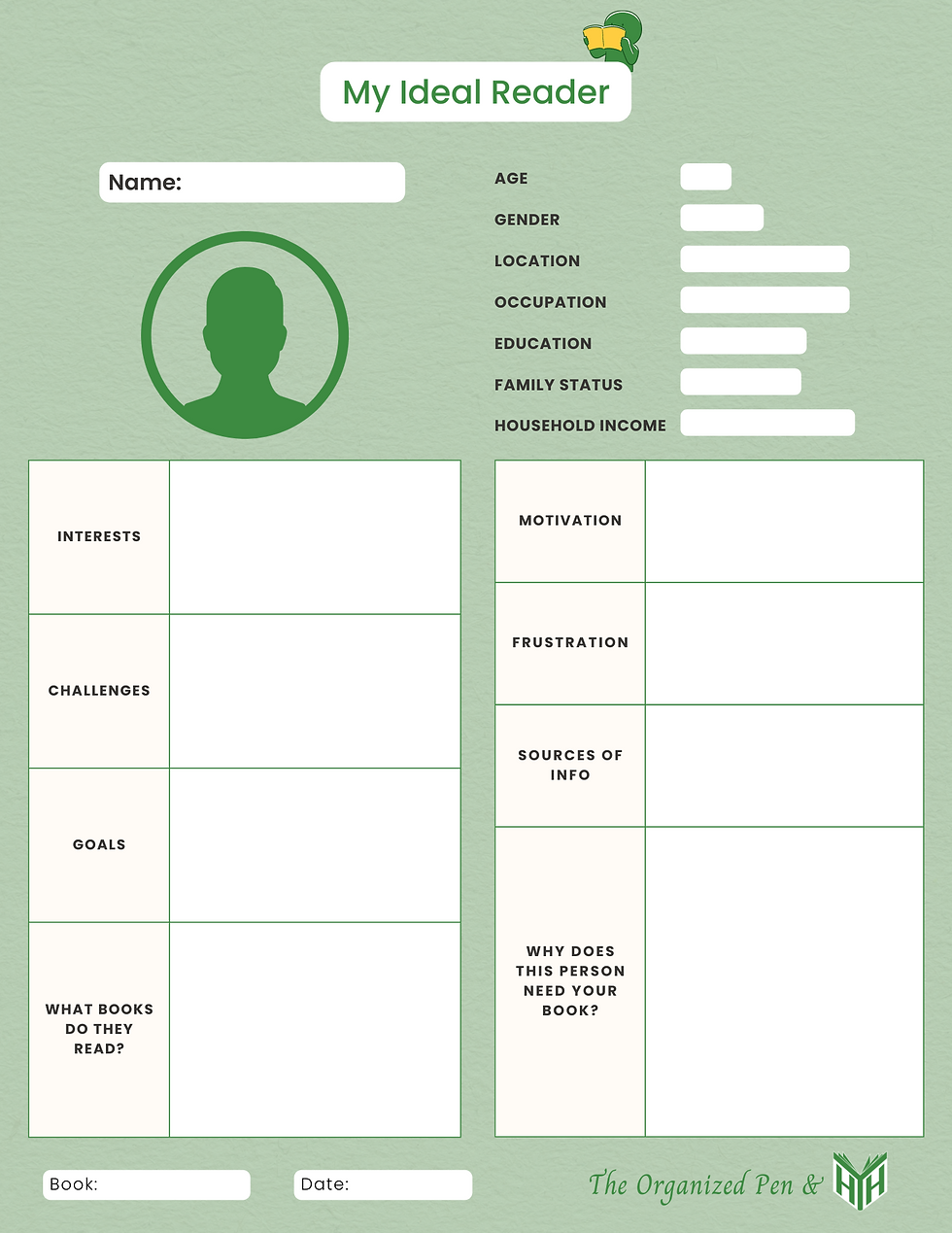Get to Know Your Ideal Reader
- Shawndra Holmberg

- Apr 24, 2023
- 3 min read
Updated: Mar 20, 2024
It’s hard to write a book for the masses, but it’s easy to speak to an individual. That’s why developing your Ideal Reader now is important. Yes, your Ideal Reader is going to come in handy while marketing your book, but your Ideal Reader is going to help you write now.
When you have your Ideal Reader in mind, you can answer the questions they have. You can offer solutions to their challenges. If you’re stuck, you can think of your Ideal Reader and write to them. Again, it’s easier to write to one person than to many. Which is why your book is not for everyone.
Who is your Ideal Reader?
When I ask clients and prospects who their book is for and who their book will help, the most common answer is “everyone.” Your book is not for everyone. Everyone will not buy your book. And if you were to try to write for everyone, you’d end up writing for no one. Your Ideal Reader is NOT everyone. So, who IS your Ideal Reader?
When you close your eyes and picture a person holding your book, what do they look like? What is happening in their day? Why did they pick up your book?
Is your Ideal Reader that client you love to work with? Are they just like your mom (or your dad) who needs your help? Is the reader you twenty years ago?
Write down all the details you can about the person holding your book. You want to make this individual, this Ideal Reader, more than just a flat description on a piece of paper. Build your reader into someone you get to know. Then you can write the book for them and answer their questions, remove their pain points.
And yes, before you ask, you can have more than one Ideal Reader, but you need to identify your primary one. One Ideal Reader who really needs your book. One who will feel that the book is speaking directly to them and their needs and their challenges. The One who will rave about your book because you wrote it just for them. You need to get to know your Ideal Reader.
Here are two exercises that can help you develop and get to know your Ideal Reader.
Write a thank you from the perspective of the reader, thanking you, the author, for your book. Write about how the book helped you. Talk about how the message improved your life. Describe the changes you were able to make because of this book.
Write a letter as the author of this book telling this person, your Ideal Reader, what they’ll learn and how their life will change.
Neither of these letters is marketing copy, book content, social post, or other material that you have to polish and share. These two letters are just you writing to another human being. Connecting.
Details of Your Ideal Reader
Though you may not yet be ready (or even need) to jump into the full development of your Ideal Reader, what details do you know about your Ideal Reader now?
Psychographics:
lifestyle
goals
pains
challenges
habits
values
interests
motivation
frustration
Behavioral:
books they read
where they get their information
engagement (with you)
readiness to buy (your services or product)
purchasing history (with any similar product or service)
product or service usage (yours or similar)
satisfaction (with your products and services or similar)
Demographics:
age
gender
location
occupation or job title
education
family status
single/married/divorced/widowed
kids/no kids
income
You can create your own Ideal Reader sheet or download mine.
If you use Canva and want a template, CLICK HERE
If you want a fillable PDF form email me.
So… who is your Ideal Reader? What do they need from your book?
__________
When you're ready... 3 ways to move forward on your book journey:
Subscribe to The Organized Pen. Get the tips, tools and strategies you need for your writing journey. ✍ Sign up for The Organized Pen.
Join us for the Write Time! If you're looking for the perfect writing partner, look no further than our Write Time group. I am hosting three-hour co-writing sessions every Saturday. Join us for the full 3 hours, just 2 hours, or come for 30 minutes. 📝 Learn more.
Let's talk about your book. I offer a 50-minute complimentary consultation to discuss your book, determine if I can be a great team member on your book journey, and identify your next steps, whether I'm part of the journey or not. 📅 Schedule a time to talk about your book.

Staring out the window counts.
~ Marni Freedman




Comments